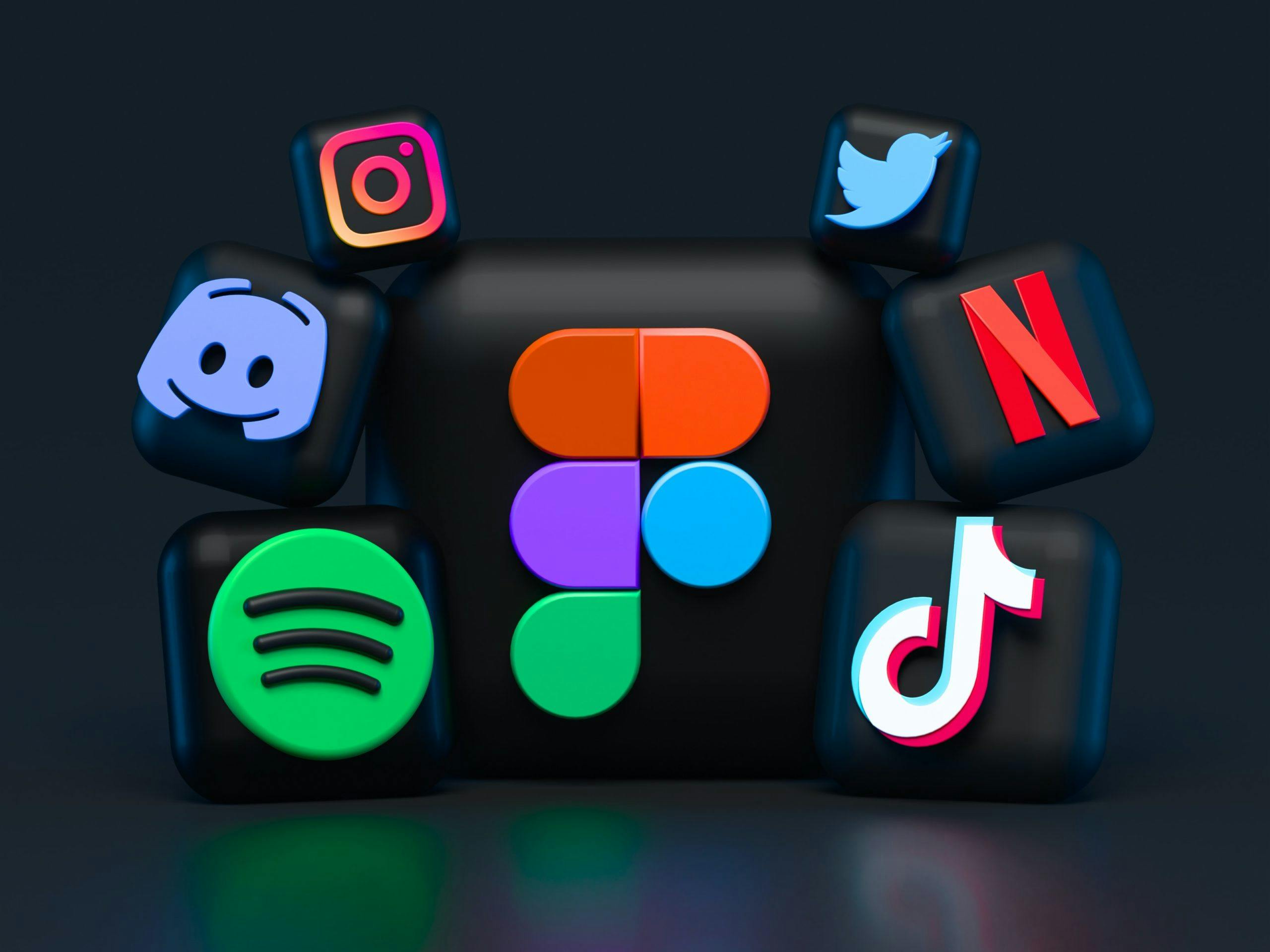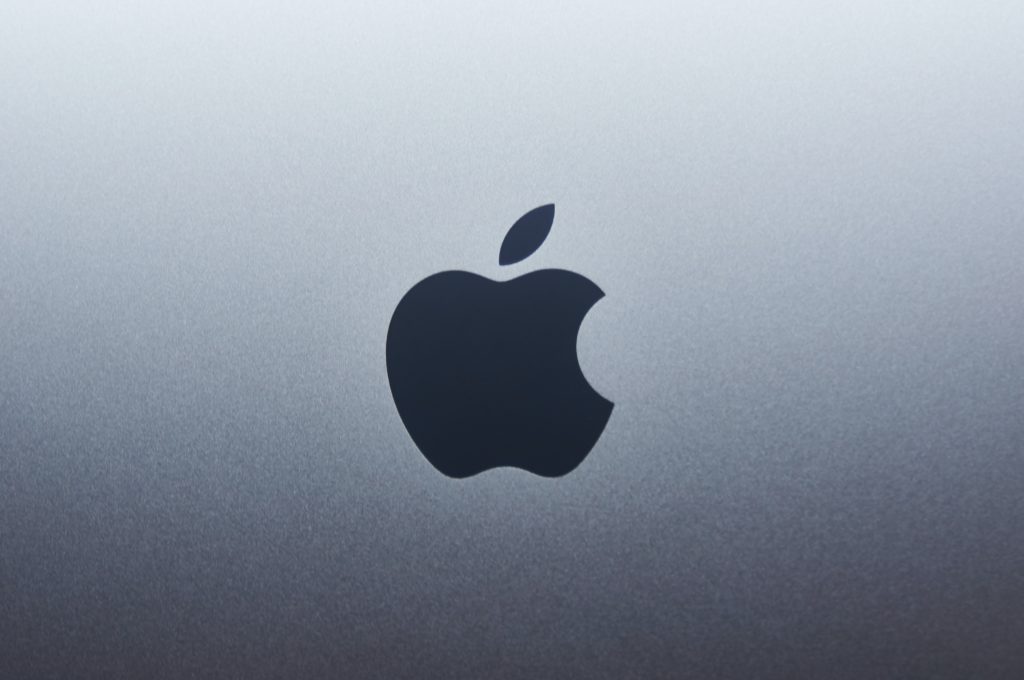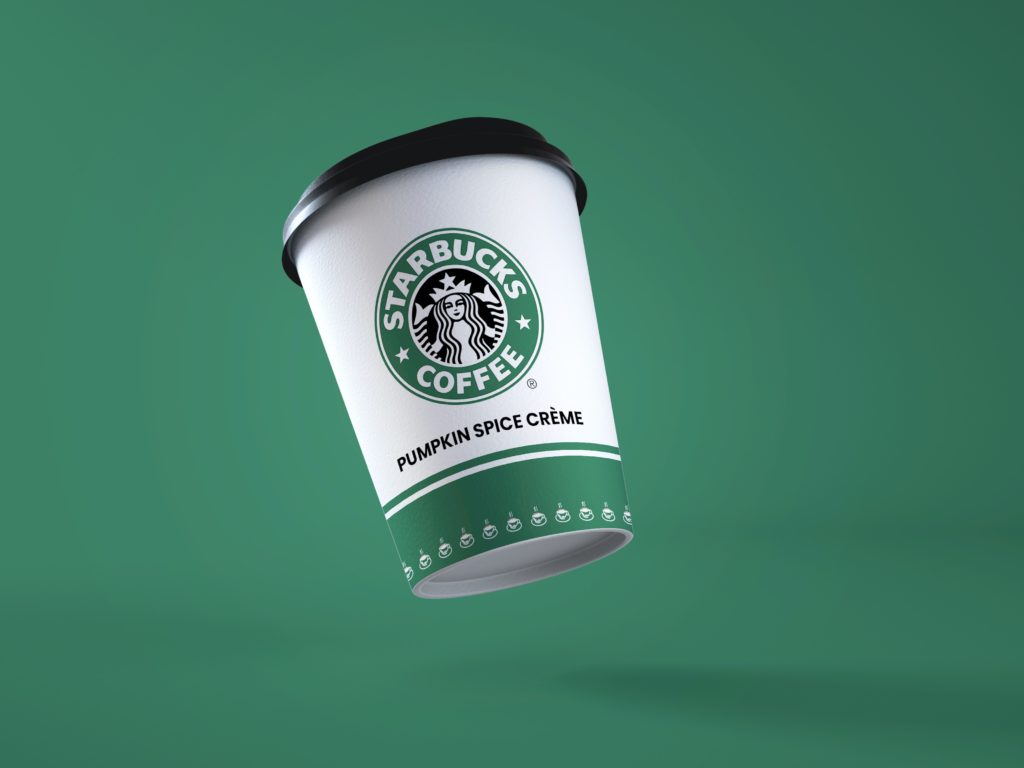

Every successful brand has a story. And while some stories are linear tales of refining and perfecting a single product, others take surprising twists and turns. These plots pivot on a strategy known as brand extension. Today, we’re diving deep into the world of brand extension examples to uncover how renowned brands stretched their horizons, innovated, and conquered new territories.

At its heart, brand extension is like a well-planned sequel in a movie franchise. The brand name you’ve come to love, introducing a new product or service in a different setting. It’s a way for established brands to leverage their existing reputation, trust, and equity to diversify their portfolio and tap into new markets.
For a budding digital creator, it’s similar to branching out to a new platform or seeking new partnerships and sponsorships. It’s about using your existing strengths and reputation to explore new frontiers.
Brands approach extension strategies in a few different ways. Here’s a closer look at the various types of brand extensions:

Everyone knows Apple for its computers. But Apple’s brand extension strategy didn’t stop there. They ventured into music with iPods, telecommunication with iPhones, and wearables with Apple Watch. It was about extending the brand image of sleek design and innovation into new terrains.
In the vast landscape of technology, Apple stands as a beacon of innovation and design. From its humble beginnings as a computer company, Apple has grown into a global behemoth, touching various facets of our daily lives. This journey, marked by a strategic brand extension, has seen Apple move beyond computers and redefine multiple industries.
Before the dawn of the 21st century, music was largely confined to CDs and cassette tapes. Enter the iPod in 2001. With its sleek design and massive storage capacity, it transformed the way we consumed music. No longer did one need to carry bulky CD players or a collection of cassettes.
Thousands of songs could fit into a device that slipped easily into a pocket. Apple’s foray into the music industry wasn’t just about hardware; the iTunes Store revolutionized music distribution and purchasing, making it a holistic experience.
In 2007, Apple took a bold step into the telecommunications sector with the iPhone. Combining a phone, an iPod, and an Internet communication device, the iPhone was a game-changer. Its intuitive user interface, combined with Apple’s hallmark design, made it an instant hit. Over the years, with each new iteration, the iPhone has set industry standards, pushing competitors to innovate and up their game.
2015 marked Apple’s entry into the world of wearables with the Apple Watch. While smartwatches were not new, Apple brought its unique touch to the segment. With a focus on health and fitness, the Apple Watch became more than just a device to check notifications.
It evolved into a wellness companion, tracking everything from heart rates to sleep patterns. The integration of the Health app and its ecosystem made it a must-have for those conscious about their well-being.
At the heart of Apple’s brand extension strategy is a commitment to innovation and design. Whether it’s computers, music players, phones, or wearables, Apple ensures a seamless user experience. The brand’s ethos – to challenge the status quo and think differently – is evident in every product they launch.
Moreover, Apple’s ecosystem plays a pivotal role in its brand extension. The interconnectivity between devices, be it the MacBook, iPhone, iPad, or Apple Watch, offers users a unified and unparalleled experience. This ecosystem not only binds the products together but also the users, creating a loyal customer base.
Apple’s journey from a computer company to a multifaceted tech giant is a testament to its visionary approach and relentless pursuit of excellence. By extending its brand into diverse sectors, Apple has not only expanded its market reach but also enriched our lives in countless ways.
As we look to the future, one can only imagine the new terrains Apple will venture into, but one thing is certain: it will continue to bear fruits of innovation and excellence.
The story of Virgin is the epitome of brand stretching. Starting as a record store, they spread their wings into airlines, telecommunications, and even space tourism. Virgin took the existing brand image of disruption and top-tier service and expanded its narrative across multiple industries.
In the world of business, few brands have demonstrated the audacity and versatility of Virgin. Founded by Sir Richard Branson in the 1970s, Virgin began as a record store and has since expanded into industries as varied as airlines, telecommunications, and space travel. This journey of brand extension is a testament to Branson’s entrepreneurial spirit and the brand’s commitment to innovation.
The #1 to make money online with TikTok Search (FREE TRAINING)

Virgin’s maiden voyage began with music. Virgin Records, established in 1972, became a disruptive force in the music industry, signing unconventional acts and producing chart-topping hits. But Branson’s ambitions didn’t stop at vinyl.
In 1984, in a bold move, he ventured into the aviation industry with Virgin Atlantic. Despite skepticism from industry stalwarts, Virgin Atlantic carved a niche for itself, known for its exceptional customer service and in-flight entertainment.
The late 1990s and early 2000s saw Virgin diving into the telecommunications sector. Virgin Mobile, launched as a joint venture in several countries, brought the brand’s signature flair to the mobile industry. With competitive pricing and quirky marketing campaigns, Virgin Mobile became a favorite among the youth demographic.
Virgin’s foray into telecommunications didn’t stop at mobile services. The brand also ventured into broadband and TV services in certain regions, further solidifying its presence in the communications sector.

Perhaps the most audacious of Virgin’s ventures is its entry into space tourism with Virgin Galactic. Aiming to make space travel accessible to civilians, Virgin Galactic is at the forefront of a new era of exploration. While commercial space flights are still in their nascent stage, the very idea embodies the Virgin brand’s ethos: pushing boundaries and venturing into the unknown.
What binds Virgin’s diverse ventures is the brand’s unwavering commitment to challenging industry norms and delivering unparalleled customer experiences. Whether it’s offering in-flight massages on an airline or aiming to take tourists to space, Virgin has consistently demonstrated a willingness to think outside the box.
Another key aspect of Virgin’s brand extension is its ability to carry its core values across industries. The brand’s playful, customer-centric approach is evident, whether you’re signing up for a mobile plan, boarding a flight, or even dreaming of space travel.
Virgin’s journey is a masterclass in brand extension. It showcases how a brand, rooted in strong values and led by visionary leadership, can seamlessly transition across industries. In a world where brands often pigeonhole themselves into specific niches, Virgin stands as a beacon of versatility and ambition.
As the company continues to expand and explore new horizons, one thing remains certain: the Virgin brand will always be synonymous with innovation and adventure.

Nike’s tale began with shoes, but their saga expanded into clothing, accessories, and even tech gadgets. Each brand extension example here leaned on Nike’s core brand image of athleticism and performance.
Nike, the iconic brand recognized by its simple yet powerful “swoosh,” began its journey in the world of sports footwear. Founded in 1964 as Blue Ribbon Sports by Bill Bowerman and Phil Knight, it was rebranded as Nike in 1971.
Today, Nike’s brand extension strategy has seen it evolve from a sneaker manufacturer to a global lifestyle and performance brand, encompassing apparel, technology, and even digital platforms.
Nike’s initial claim to fame was its innovative approach to athletic footwear. The introduction of the Nike Air cushioning in the late 1970s was a game-changer. This technology, visible in the Air Max line, set Nike apart in the market, offering athletes and casual wearers alike a unique blend of comfort and performance.
Recognizing the potential beyond shoes, Nike ventured into athletic apparel in the 1970s and 1980s. From running shorts to high-performance athletic wear, Nike’s clothing line became synonymous with both style and function. The brand’s commitment to innovation was evident in its Dri-FIT technology, which wicks sweat away, keeping athletes cool and comfortable.
Nike’s expansion didn’t stop at clothing. The brand delved into accessories, introducing bags, hats, and even sports equipment, further solidifying its position as a comprehensive sports brand.
In the 21st century, Nike recognized the potential of technology in enhancing athletic performance. The launch of Nike+ in collaboration with Apple in 2006 marked Nike’s foray into the digital realm. This system, which integrated with iPods, allowed runners to track their progress, set goals, and even compete with others.
This digital initiative paved the way for further innovations, including the Nike Training Club app, offering guided workouts, and the Nike Run Club app, a haven for runners worldwide.
One of Nike’s most significant brand extensions has been its seamless transition from pure athletic wear to lifestyle and streetwear. Collaborations with designers, artists, and celebrities, like the iconic partnership with Michael Jordan, resulting in the Air Jordan line, have made Nike products a staple both on the courts and the streets.
Further collaborations with figures like Kobe Bryant, LeBron James, and even fashion-forward partnerships with Off-White’s Virgil Abloh, have ensured Nike’s relevance across various demographics and cultures.
Nike’s brand extension journey is a testament to the power of innovation, adaptability, and understanding market trends. From its roots in athletic footwear to its current status as a global lifestyle brand, Nike has consistently demonstrated its ability to evolve while staying true to its core values of performance, inspiration, and inclusion. As the brand continues to “Just Do It,” the world eagerly awaits its next move.

Initially just plastic building blocks for kids, LEGO’s brand extension strategy has led them into video games, movies, and even theme parks. By maintaining the essence of creativity and fun, LEGO crafted new stories in diverse sectors.
Lego, the brand synonymous with colorful interlocking bricks, has been a staple in children’s toy boxes for decades. Originally known for its high-quality construction sets, Lego’s brand extension strategies have seen it venture into new terrains, making it one of the best brand extension examples in the business world.
One of Lego’s most successful brand extensions has been its line extensions within the same category of construction toys. By launching a new range of products that catered to various age groups and interests, from intricate architectural sets for adults to themed sets like Star Wars and Harry Potter for kids, Lego ensured it reached new audiences while retaining its existing clients.
Lego’s brand extension idea wasn’t confined to physical products. Recognizing the digital age’s potential, Lego ventured into video games, creating a new product category that resonated with both young and old. Titles like “LEGO Star Wars” and “LEGO City Undercover” became hits, showcasing how a brand known for physical toys could successfully transition into the digital realm.
To make sure its brand extension strategies were effectively communicated, Lego leveraged social media platforms and optimized its search engine presence. This ensured that when consumers looked for something new within the same brand, Lego’s diverse range of products was easily discoverable.
One of the best brand extension examples from Lego is its foray into the film industry. The launch of “The LEGO Movie” not only introduced the brand to a wider audience but also solidified its position as a cultural icon. The movie’s success led to launching new themed sets, further cementing Lego’s authority extension in the entertainment sector.
While Lego boasts numerous successful brand extensions, it’s essential to take a look at instances where the brand extension failed. Lego once ventured into creating jewelry for girls, an idea that didn’t resonate with its core audience and was seen as brand dilution. Such unsuccessful brand extensions serve as reminders that while it’s crucial to innovate, it’s equally vital to make sense and stay true to the original brand’s essence.
Lego’s journey offers invaluable insights into how a company can effectively extend its brand. From line extensions within the same category to launching new products that reach new demographics, Lego’s brand extension strategies showcase the importance of innovation while maintaining high quality.
However, as the company authority extension grows, it’s also a reminder to tread carefully, ensuring that each brand extension idea aligns with what the brand is known for, avoiding potential pitfalls like brand dilution. As Lego continues to inspire and build, the world eagerly awaits its next creative endeavor.
The #1 to make money online with TikTok Search (FREE TRAINING)

Starbucks, a name synonymous with coffee, has become a global phenomenon. From its humble beginnings in Seattle to its presence in bustling cities worldwide, the brand has become well known for more than just its signature brews. Over the years, Starbucks has showcased some stellar examples of brand extension, diversifying its offerings and cementing its position as a lifestyle brand.
While Starbucks is primarily known for its coffee, one of the most evident examples of brand extension is its expanded menu. Recognizing the diverse tastes of its global clientele, Starbucks introduced a range of products and services.
From teas to frappuccinos, and from pastries to hearty sandwiches, Starbucks ensured that it wasn’t just a coffee stop but a holistic cafe experience. This move to introduce new products and services under the well-known Starbucks brand umbrella ensured that they catered to a broader audience.
Another brilliant move in Starbucks’ brand extension strategy was the introduction of branded merchandise. Customers can now purchase Starbucks mugs, tumblers, and even coffee makers. This allows coffee enthusiasts to recreate the Starbucks experience in the comfort of their homes.
By allowing consumers to take a piece of Starbucks with them, the brand has managed to create a new product category that resonates with its core offerings.
In today’s digital age, a brand’s presence on mobile devices is crucial. Starbucks, recognizing this trend, introduced its mobile app. More than just a digital payment method, the app offers a loyalty program, the ability to order ahead, and even access to curated music playlists.
This digital foray is a prime example of brand extension, where Starbucks took its well-known cafe experience and translated it into a digital service.

Starbucks’ ready-to-drink coffees and frappuccinos, available in supermarkets and convenience stores, are yet another testament to the brand’s extension prowess. By making their products accessible outside the traditional cafe setting, Starbucks has managed to reach consumers in their daily routines, making the brand even more integral to their lives.
Starbucks’ journey provides invaluable insights into how a well-known brand can effectively extend its reach. Through strategic decisions to introduce new products and services, while staying true to its core essence, Starbucks has showcased how to diversify offerings without diluting the brand’s identity. As we watch and wait for Starbucks’ next move, it’s clear that their mastery in brand extension serves as a blueprint for other brands aiming for global resonance.

For these brands, the brand extension wasn’t just a wild leap of faith. It was backed by meticulous research and a solid marketing strategy. They identified synergies between their established brand and the new product, ensuring they complemented each other.
A successful brand extension also hinges on the company’s ability to maintain its core brand image while effectively marketing the new product or service. The essence of the brand should echo in the new venture, assuring consumers of the same level of trust and quality.
In the dynamic world of business, brand extensions have become a popular strategy for companies looking to diversify their offerings and tap into new markets. However, not all brand extensions are created equal. While some have been wildly successful, others have missed the mark. So, what separates the best brand extensions from the worst? Let’s delve into the nuances.
One of the primary factors that determine the success of a brand extension is its relevance to the original brand. Examples of brand extensions that seamlessly align with the core brand’s values and image tend to be more successful. For instance, a company known for high-quality kitchen appliances might successfully launch new products in the cookware segment. This type of brand extension feels organic and capitalizes on the brand’s existing reputation.
The best brand extensions are those that address a genuine consumer need. If a company can identify a gap in the market and introduce products or services that fill that gap, the extension is more likely to be successful. Strategic brand extensions are rooted in thorough market research and a deep understanding of consumer desires.
Successful brand extensions often leverage the brand loyalty of their existing customer base. When consumers have a strong affinity for a brand, they are more likely to try out new products or services introduced under the same brand umbrella. This trust acts as a springboard, making the launch of new products smoother and more effective.
A common pitfall in brand extensions is muddled positioning. The best brand extensions have a clear value proposition that differentiates them from competitors and aligns with the brand’s core values. Without clear positioning, consumers can become confused, leading to a lackluster reception.
While it’s tempting to tap into various markets, brands must be wary of overextending. Diversifying too much can dilute the brand’s essence and alienate its core audience. The type of brand extension chosen should be strategic, ensuring it complements the brand rather than overshadowing it.
In the realm of brand extensions, the line between success and failure can be thin. By ensuring relevance, meeting consumer needs, leveraging brand loyalty, maintaining clear positioning, and avoiding overextension, brands can navigate this challenging terrain. As we continue to see examples of brand extensions in the market, it becomes evident that a well-thought-out strategy is the cornerstone of any successful brand expansion.

The world of brand extension examples is filled with tales of brands, both big and small, taking calculated risks and expanding their narratives. Whether it’s a line extension, a brand stretch, or a lifestyle extension, the key is to remain true to the brand’s essence while exploring new horizons.
For businesses or individuals looking to expand their reach, brand extension offers a roadmap. It shows that with the right strategy, a deep understanding of one’s brand image, and a dash of innovation, new frontiers are just around the corner.





